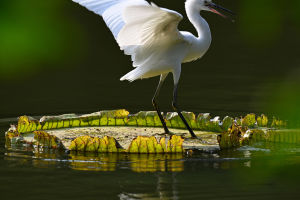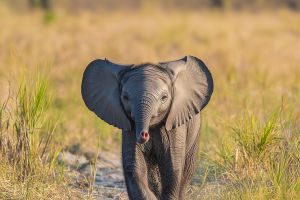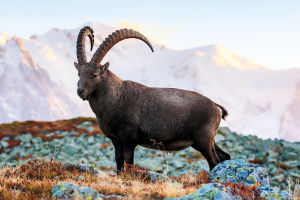Have you ever seen a group of flamingos standing gracefully in shallow water, their pink feathers glowing under the sun? These elegant birds are not just a beautiful sight; they are full of fascinating secrets.
Today, let's dive into the world of flamingos and discover what makes them so unique!
Where Do Flamingos Live?
Flamingos are found in many parts of the world, from the salt lakes of Africa to the coastal lagoons of South America. They prefer warm, shallow waters with plenty of algae and tiny organisms to feed on. Some species even live in high-altitude lakes in the Andes, where the water is so salty that few other creatures can survive.
In rare cases, flamingos have been spotted in unexpected places like China’s Xinjiang region and the Dongting Lake in Hunan. These sightings often happen when the birds migrate in search of food or better living conditions.
Why Are Flamingos Pink?
Flamingos are not born pink! When they hatch, their feathers are gray or white. So where does their famous pink color come from? The secret is in their diet. Flamingos eat algae, small crustaceans, and plankton that contain a natural pigment called carotenoid. Over time, this pigment turns their feathers pink or red. The more carotenoids they consume, the brighter their color!
In fact, flamingos living in different regions have slightly different shades. Some are pale pink, while others have a deeper red hue. If a flamingo doesn’t get enough of these pigments, its feathers can fade to a lighter color.
What’s Special About Their Beaks?
Flamingos have uniquely shaped beaks that help them filter food from the water. Unlike most birds, their beaks curve downward, and their upper jaw is smaller than the lower one. They use their beaks like built-in sieves, drawing in water and pushing it out while trapping tiny food particles inside.
Some species, like the Chilean flamingo, are very selective about their habitat. They only live in lakes without fish because fish compete with them for food. This is why their populations are more restricted compared to other flamingo species.
How Do Flamingos Raise Their Young?
Flamingos are social birds, living in large flocks that can contain thousands of individuals. They build their nests from mud, forming small mound-like structures to keep their eggs safe from rising water levels. Each female lays just one egg, which both parents take turns incubating for about 27 to 31 days.
Once the chick hatches, it is covered in soft gray down and is fed a special nutrient-rich "milk" produced by both parents. This flamingo milk contains proteins and fats essential for the chick’s growth. Young flamingos take a few years to develop their full pink color, which happens as they eat more carotenoid-rich food.
Do Flamingos Migrate?
Unlike some birds that migrate long distances every year, flamingos generally stay in one place. However, if food becomes scarce or their habitat changes, they will travel in search of better conditions. When they migrate, they usually fly at night, reaching speeds of 50-60 km/h and covering up to 600 km in one trip.
During the day, they fly at high altitudes to avoid predators. Since they prefer traveling in groups, watching a flock of flamingos in the sky is truly a breathtaking sight.
How Many Types of Flamingos Are There?
There are six species of flamingos, divided into three genera:
1. Lesser Flamingo (Phoeniconaias minor): Mainly found in Africa and some parts of India.
2. Andean Flamingo (Phoenicoparrus andinus): Lives in the high-altitude lakes of South America.
3. James’s Flamingo (Phoenicoparrus jamesi): The rarest species, mainly found in Peru, Bolivia, and northern Chile.
4. Greater Flamingo (Phoenicopterus roseus): The most widespread species, found in Africa, South Asia, and parts of Europe.
5. American Flamingo (Phoenicopterus ruber): The most vibrant red-pink flamingo, found in the Caribbean and northern South America.
6. Chilean Flamingo (Phoenicopterus chilensis): Found in South America, from central Argentina to Ecuador.
Each species has its own unique features, but all share the same graceful posture and social nature.
What Makes Flamingos So Unique?
Flamingos are not just about their striking appearance. They have strong, social bonds and live in massive flocks, sometimes numbering over a million birds! They also have an unusual habit of standing on one leg. Scientists believe this helps them conserve body heat, reduce muscle fatigue, and maintain balance in the water.
Join the Flamingo Fan Club!
Now that we've uncovered some of the incredible secrets of flamingos, what do you think about these stunning birds? Have you ever seen one in the wild? Share your thoughts with us! Keep exploring, stay curious, and let’s continue discovering the wonders of nature together.
This article brings you closer to flamingos with engaging and easy-to-read explanations. Let us know if you want more fascinating animal facts!
Pink Flamingos - 4K Video - Flamingo Bird Collection With Relaxing Music
Video by Around The World


